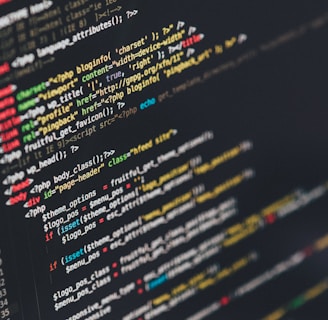Digital Twins in Manufacturing: Speeding Up Prototyping and Reducing Downtime
Discover how digital twins accelerate product prototyping and reduce factory downtime through real-time simulations, predictive insights, and smarter operations.
Vishal P. Singh
5/29/20253 min read


In the age of smart manufacturing, precision and speed are no longer optional—they are the foundation of competitive advantage. Manufacturers are under growing pressure to reduce time-to-market, enhance product quality, and prevent unplanned downtimes. Amid this landscape, digital twins have emerged as a transformative technology redefining how factories prototype, monitor, and optimize.
Whether you're running a mid-sized plant or a global production line, digital twins offer unmatched insight and control. But what exactly are they, and why are they critical to the next phase of industrial evolution?
What Are Digital Twins?
Digital twins are real-time digital replicas of physical objects, systems, or processes. They use sensor data, simulations, and machine learning to mirror the performance and behavior of assets in the real world.
In manufacturing, a digital twin could represent a machine, a production line, or even the entire factory floor. This living model constantly receives data from its physical counterpart, enabling manufacturers to visualize, test, and tweak operations—without interrupting actual production.
Unlike static models, digital twins evolve with every data point, becoming more accurate, predictive, and valuable over time.




Speeding Up Prototyping with Digital Twins
Prototyping is traditionally one of the most time-consuming and expensive stages of product development. It often involves trial and error, multiple physical iterations, and costly material usage.
With digital twins, this process becomes dramatically faster and more efficient:
Virtual testing: Engineers can simulate different design variations within a digital environment before building a single physical prototype.
Performance prediction: Digital twins predict how a product or machine will behave under different conditions, allowing teams to foresee failures and adjust designs early.
Shorter feedback loops: Designers and R&D teams get real-time feedback, reducing the cycle from concept to production-ready prototype.
This shift enables companies to move from reactive to proactive development—launching products faster and with greater confidence.
Reducing Downtime through Predictive Modeling
Unexpected machine failures are one of the biggest drains on manufacturing efficiency. Every hour lost to downtime translates into missed targets, extra labor costs, and disrupted supply chains.
Digital twins help manufacturers fight this problem on multiple fronts:
Real-time monitoring: Sensors embedded in machines stream live data to the digital twin, allowing operators to spot early signs of wear, misalignment, or overheating.
Predictive maintenance: AI models use historical and live data to forecast equipment failures before they happen, prompting timely interventions.
Root cause analysis: When issues arise, digital twins help trace them back to specific variables, cutting investigation time and reducing recurrence.
By implementing digital twins, factories gain the ability to move from firefighting to foresight—minimizing downtime and maximizing uptime.
Other Operational Benefits
Beyond prototyping and downtime reduction, digital twins unlock a wide range of additional benefits:
Process optimization: Simulate and refine workflows to improve throughput without trial-and-error on the shop floor.
Training and safety: Digital environments allow employees to train on virtual systems, reducing accidents and improving response times.
Supply chain integration: By linking product and process twins with inventory and logistics data, manufacturers gain end-to-end visibility and control.
These advantages position digital twins as a core pillar of smart factory transformation.
Industry Use Cases
Various industries are already leveraging digital twins to accelerate innovation and efficiency:
Automotive: Simulating entire production lines to test configurations before physical deployment.
Pharmaceuticals: Ensuring regulatory compliance by modeling batch behaviors and validating processes digitally.
Heavy engineering: Monitoring large assets like turbines and cranes for structural stress and fatigue.
No matter the sector, the ROI is clear—faster development, fewer breakdowns, and smarter decision-making.
Getting Started with Digital Twins
Implementing digital twins doesn't have to be overwhelming. Start small with one machine or process and expand as value is demonstrated. Choose systems that integrate well with existing IoT, ERP, and MES platforms.
Also, don’t overlook the human factor. Upskilling your team to work with digital twin platforms is essential to fully realizing their potential.
Final Thoughts
In today’s fast-paced manufacturing landscape, agility and intelligence are key. Digital twins deliver both. They allow you to build smarter, respond faster, and operate more reliably—without overhauling your entire infrastructure.
As more factories across India and the world embrace smart manufacturing, the question is not whether to adopt digital twins—but how soon. Because in the future of manufacturing, your digital twin might just be your most valuable asset.
